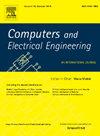Hybrid twin attention based convolutional stacked sparse autoencoder for classification of defected weld images
IF 4
3区 计算机科学
Q1 COMPUTER SCIENCE, HARDWARE & ARCHITECTURE
引用次数: 0
Abstract
Welding is an essential joining process in industrial manufacturing. Many deep learning models are introduced to detect welding errors. However, with a shortage of training data samples, most existing models take longer and are less accurate because of limited learning ability and increased computational complexity problems. To address issues with existing methods, this research presents an efficient deep learning model for accurately classifying multiple welding flaws in minimal time. The most crucial steps that are carried out in the proposed welding error detection framework are pre-processing feature extraction and classification. Initially, the input images are collected from the welding defects dataset. To increase the quality of the obtained raw input images, different pre-processing techniques, such as image scaling, image denoising, and image enhancement are applied. After pre-processing, feature extraction is carried out with the help of the discrete wavelet transform (DWT) and the grey-level run length matrix (GLRLM), which helps to reduce the complexity problems. Finally, a Hybrid twin attention-based Convolutional Stacked Sparse Autoencoder (HAT_CS2E) is used to classify multiple weld defects accurately from the given images. The proposed model combines a convolutional neural network (CNN) and a stacked sparse autoencoder network. The integration of these networks helps to learn more spatial and local features that generate high quality feature maps and produce accurate classification outcomes. For simulation, the Welding Defects Dataset is utilized, and several existing approaches are compared with the proposed model in terms of accuracy, precision, recall, F1-score, and calculation time. The proposed model attained an accuracy of 97.01 %, precision of 96.98 %, recall of 95.76 %, F1-score of 95.12 %, and computation time of 0.021 s by altering frame level welding defect recognition. Also, the proposed model achieved superior results in pixel level welding defect detection process compared with existing studies in terms of accuracy at 99.23 %, recall value at 80.3 %, precision value at 68.78 %, and F1-score at 75.91 %.
基于混合双注意的卷积堆叠稀疏自编码器的焊缝缺陷图像分类
焊接是工业制造中必不可少的连接工艺。引入了许多深度学习模型来检测焊接误差。然而,由于训练数据样本的短缺,现有的大多数模型由于学习能力的限制和计算复杂性的增加,需要花费更长的时间,准确性也较低。为了解决现有方法存在的问题,本研究提出了一种高效的深度学习模型,可以在最短的时间内准确地对多个焊接缺陷进行分类。在提出的焊接误差检测框架中,最关键的步骤是预处理特征提取和分类。首先,从焊接缺陷数据集中收集输入图像。为了提高获得的原始输入图像的质量,采用了不同的预处理技术,如图像缩放、图像去噪和图像增强。预处理后,利用离散小波变换(DWT)和灰度运行长度矩阵(GLRLM)进行特征提取,有助于降低复杂性问题。最后,利用基于混合双注意力的卷积堆叠稀疏自编码器(HAT_CS2E)从给定图像中对多个焊接缺陷进行精确分类。该模型结合了卷积神经网络(CNN)和堆叠稀疏自编码器网络。这些网络的集成有助于学习更多的空间和局部特征,从而生成高质量的特征图,并产生准确的分类结果。利用焊接缺陷数据集进行仿真,并在准确率、精密度、召回率、f1分数和计算时间等方面与现有的几种方法进行了比较。该模型通过改变帧级对焊接缺陷进行识别,准确率为97.01%,精密度为96.98%,召回率为95.76%,f1评分为95.12%,计算时间为0.021 s。在像素级焊接缺陷检测过程中,准确率为99.23%,召回率为80.3%,精度值为68.78%,f1分数为75.91%,均优于现有研究。
本文章由计算机程序翻译,如有差异,请以英文原文为准。
求助全文
约1分钟内获得全文
求助全文
来源期刊

Computers & Electrical Engineering
工程技术-工程:电子与电气
CiteScore
9.20
自引率
7.00%
发文量
661
审稿时长
47 days
期刊介绍:
The impact of computers has nowhere been more revolutionary than in electrical engineering. The design, analysis, and operation of electrical and electronic systems are now dominated by computers, a transformation that has been motivated by the natural ease of interface between computers and electrical systems, and the promise of spectacular improvements in speed and efficiency.
Published since 1973, Computers & Electrical Engineering provides rapid publication of topical research into the integration of computer technology and computational techniques with electrical and electronic systems. The journal publishes papers featuring novel implementations of computers and computational techniques in areas like signal and image processing, high-performance computing, parallel processing, and communications. Special attention will be paid to papers describing innovative architectures, algorithms, and software tools.
 求助内容:
求助内容: 应助结果提醒方式:
应助结果提醒方式:


